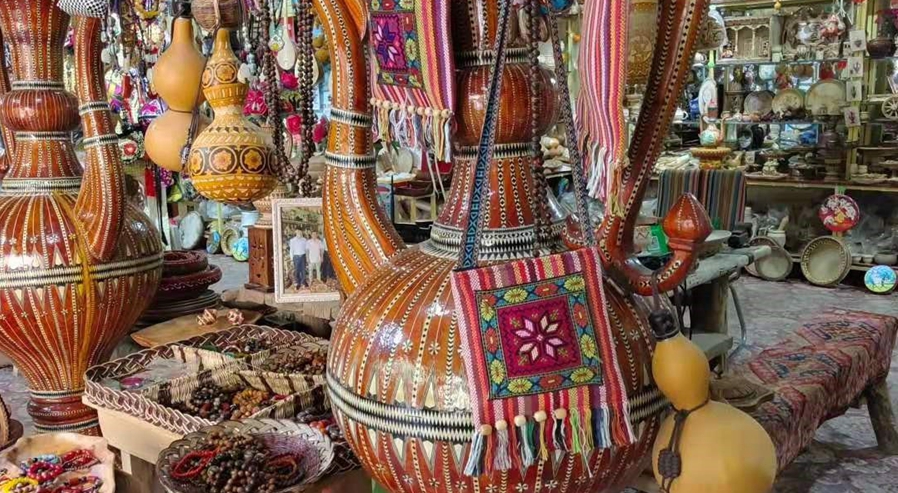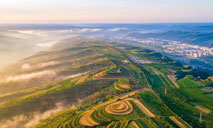"If you have not been to Kashgar, then you haven’t really been to Xinjiang”
"If you have not been to Kashgar, then you haven’t really been to Xinjiang”. This Chinese saying led me straight to the first destination of my journey to the west: China’s highly praised Kashgar.

Scenic spot of Kashgar’s ancient quarter showcases the city as one of the most exemplary places in Xinjiang. (People’s Daily Online/Wu Chaolan)
Although I had been living in China for a few years by now, I did not really know what to expect from the region and its multiethnic culture. Besides dull and one-sided reports about Xinjiang, my knowledge of this area inhabited by 25 million people was relatively limited.
When I reached Kashgar, the first thing that struck me was the bright sunlight. Although it was already close to 4 pm in the afternoon, the sun was up high and as intense as during noon.
On my way towards my accommodation, I passed green streets with turquoise buses and yellow-white-painted taxis cruising along it. On the side of the road, I recognized the familiar signs promoting “the Chinese dream”, but unlike the eastern provinces of China, all other signs on the road and shops carried Uygur script above the Chinese characters.
What was also new to my eyes were the camel images on posters, vehicles, bus stops and even carpets. It somehow felt as if the cute panda bear had been completely replaced by its brown companion. When I finally got to see a proper camel in the ancient city of Kashgar, I could not help but ask: “What is it with all these camels at this place?” To my surprise, I got the eloquent explanation that since Kashgar had been an important hub of the ancient Silk Road, camels were the main animals that carried goods along its trail and thus had become a motif of the region.
Walking through the pretty alleys of Kashgar, I could witness the wonderful local architecture that has been preserved after its renovation in 2008. In a museum of the town, it said that all 220,000 inhabitants of the ancient town had been given support by the local government to renovate their houses in a way that greatly boosted their livelihoods. Toilets that used to be on top of the buildings have been abandoned, while heating systems and proper pipes have been installed, and most importantly, the houses have been stabilized in order to prevent damage from earthquakes that could hit the region.

Wooden handicrafts found on shelves in souvenir shops in Kashgar’s old city reveal Uygur customs and offer a welcome sign to guests. (People’s Daily Online /Annemarie Li)
Meanwhile, another object caught my attention. At first, I thought I was just looking at oversized pots that were randomly placed in shops. But it turned out that these pots were placed at almost every entrance in the ancient town, indicating Uygur customs and expressing welcome to guests. I have been told that pots like this of a regular size can also be found at people’s homes, and are filled with water for guests to wash their hands: Rubbing the hands three times back and forth without spilling any water is the polite way of doing it.
At around 9 pm in the evening, I sat down in one of the minimalist but lovely tea houses to let the town’s atmosphere work its magic. For Xinjiang, it typically does not get dark before ten or even later in the evening. This makes you feel a little bit off, as it means usual eating times have been pushed back by two hours or more. The later it got, the more locals wandered on the streets, wearing colorful clothes and square-shaped hats, absorbed in conversations over tea, dried fruits or meat snacks, forming the background symphony of my first full day in Xinjiang.

Tea with dried fruits and nuts served at a famous traditional tea house in Kashgar’s ancient quarter. (People’s Daily Online/Annemarie Li)
Photos
Related Stories
- Lives of people in Kashgar, NW China’s Xinjiang
- From sightseers to entrepreneurs: young tourists mesmerized by Kashgar start up a B&B business there
- Xinjiang's Kashgar enjoys prospering B&B business thanks to greater social stability
- Night fair in Kashgar, northwest China's Xinjiang
- In pics: daily life in Kashgar, China's Xinjiang
Copyright © 2021 People's Daily Online. All Rights Reserved.










